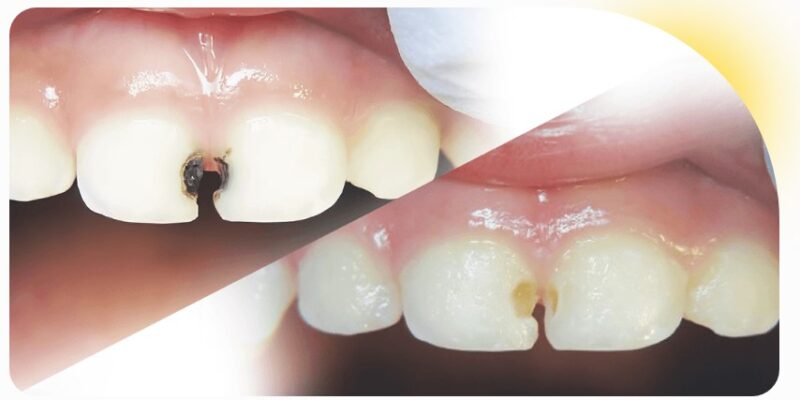In this Article:
- What silver diamine fluoride (SDF) is and who can benefit from it
- Why SDF can be helpful for young children, the elderly and others who have trouble sitting for lengthy treatment
- The benefits and drawbacks of SDF, including a black staining on treated decay
Treating Tooth Decay
There is a bacteria in your mouth that forms acid when you eat or drink. This acid can break down the outer surface of teeth, causing tooth decay.
Many children develop tooth decay in their baby teeth. In children, this decay often affects the enamel, the hard outer surface of the teeth that you can see. Older adults also are at higher risk than other adults for decay. In older adults, the decay often affects the tooth root, the part of the tooth below the gum line. This is because, as many adults age, the gums pull away from the teeth, exposing the roots.
Tooth decay can be painful, and, if left untreated, it can cause a hole to form in the tooth or tooth root. This can lead to an infection, which can spread to other parts of the mouth, and may even cause tooth loss.
When caught early, tooth decay can be treated with various fluoride products. For example, tooth pastes, mouth rinses, etc. Or we can use filling materials or a product called silver diamine fluoride (SDF). SDF is a colorless liquid that can be used to slow or stop tooth decay.
What is Silver Diamine Fluoride (SDF)?
Silver diamine fluoride (SDF) is a liquid that can be easily applied in the dental office. Your dental care provider can brush SDF right over tooth decay without using a dental drill or local anesthesia. The silver in SDF kills the germs that cause tooth decay. SDF also has fluoride in it that helps prevent, slow down or stop decay.
We can also use SDF to help relieve tooth sensitivity and treat tooth decay on roots that may become exposed in adults.
Many people can benefit from SDF, but it is especially helpful for those who have trouble sitting for long periods of time to allow the dentist to place a traditional filling.
People who may benefit from SDF include:
- Young children
- People with mental or physical disabilities
- Elderly adults
- People who cannot use sedation during treatment
In addition, SDF is less expensive than other cavity treatment options and easy to apply.
SDF does, however, have some drawbacks – the main one being a black staining of the treated decay. Despite the staining, it is safe to use and does not stain the untreated, healthy surfaces of the tooth, surrounding teeth or permanent teeth that have not yet come in. This staining of the treated decay does not fade over time. However, the treated decay can always be treated with a cosmetic filling later on if desired. The gums next to the decay may also develop a temporary stain or irritation, but this is rare. Some people also may experience a temporary metallic taste during treatment. Dentist needs to reapply about every 6 months for continued benefit in stopping decay.
Have more questions?
Rapha Dental is your dentist in South Jersey. Contact us or call us at 856-829-8668 to schedule an appointment to find out more.
Copyright @ American Dental Association

